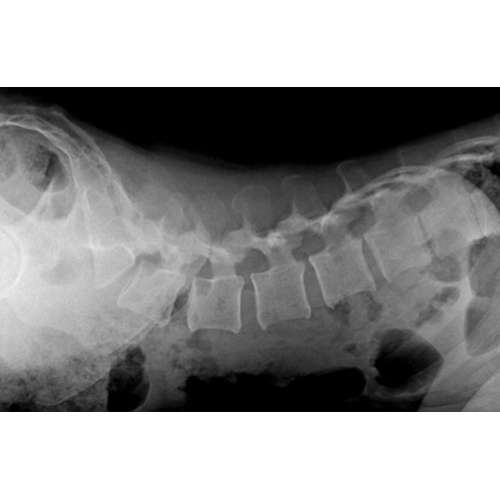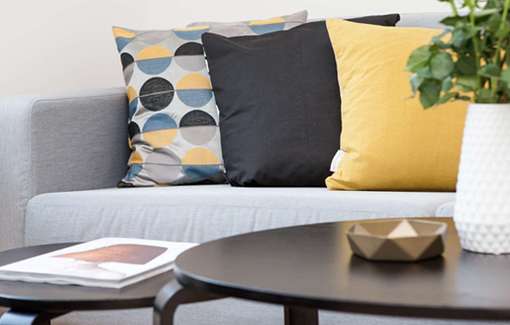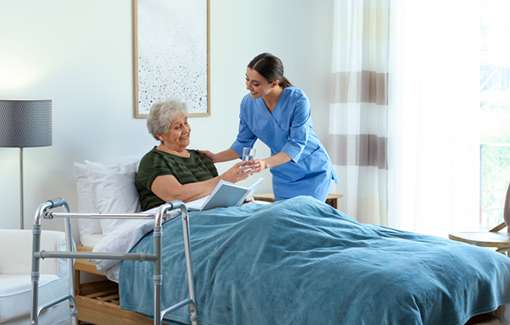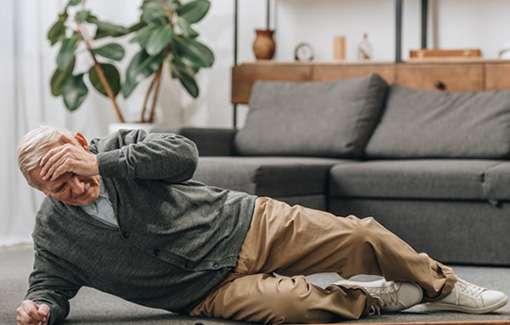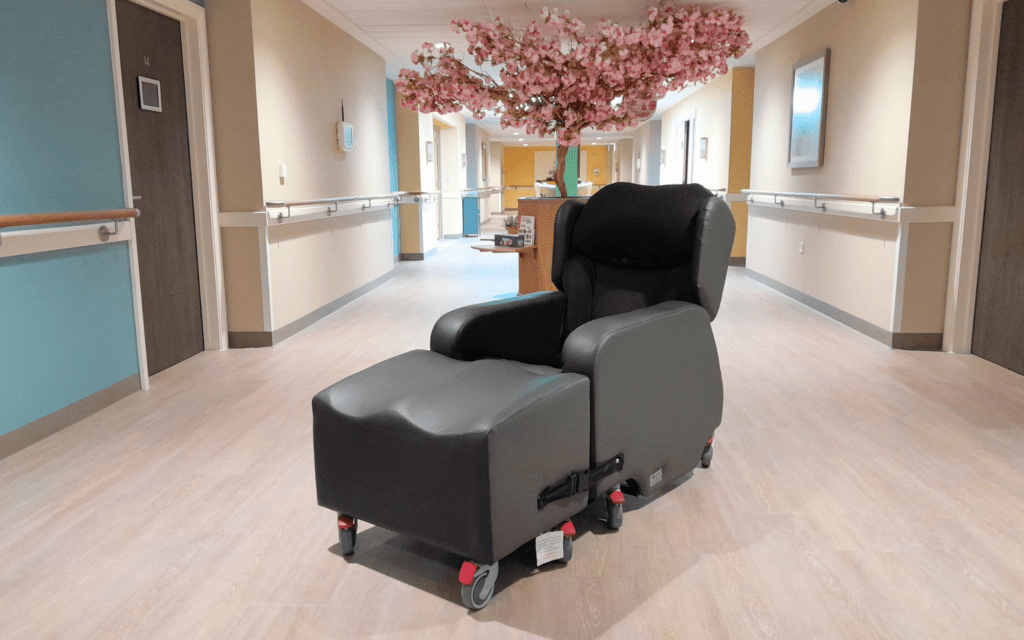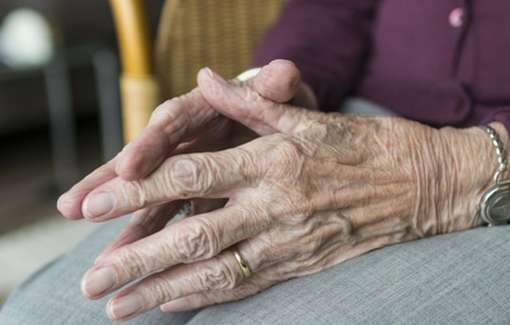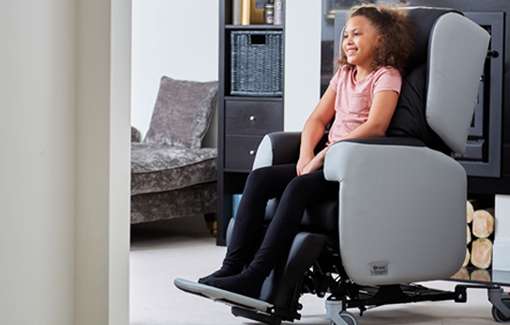Getting the right chairs for people with lordosis can be a bit more challenging because it’s a condition that’s usually associated with other things like muscular dystrophy. Nevertheless, people with lordosis still need certain things from their specialist seating to ensure that they have the best support available.
So here are a few things you should consider when you’re specifying specialist seating for people with lordosis.
Jump straight to…
What is lordosis?
Like scoliosis and kyphosis, lordosis is a spinal deformity. Technically, everyone has a lordosis because our spine curves inwards (towards our body) to help absorb any shock, but if the spine curves too far then it’s considered an increased lordosis.
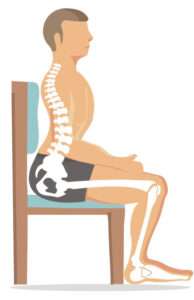
Here is a diagram of someone with lordosis. As you can see, there is a much more pronounced inward curve in the lumbar region.
In its most extreme form, lordosis can make the person’s spine seem C-shaped from a side view. As you can imagine, this is very uncomfortable and doesn’t provide much stability to your spine.
Lordosis can be caused by anything like tight spinal muscles, instability of your pelvis, or uneven muscle tone.
For more information on kyphosis, lordosis, and scoliosis, take a look at this blog post.
Support the pelvis
If you’ve read any of our other seating articles before, you’ll know that the pelvis is the foundation for any good seating positioning and posture. Particularly with lordosis, you need to make sure that the person’s pelvis is in the correct position to give them the most support.
Anterior pelvic tilt can actually be a cause of lordosis. This is where your hips are tilted too far forward, which can consequently cause a more pronounced arch in your lower back.
If your client has an anterior pelvic tilt, then you might want to choose a chair that has a tilt-in-space function. This will give the person a chance to relax their lumbar region and help tilt the pelvis back to a healthier position.
You also need to make sure that the pelvis is kept in a central position with the knees and hips levels. This will help create a stable base for a healthy seating position.
Lots of lumbar support
With lordosis causing such a curvature of the spine, it’s imperative that you get a chair with extra support around the lower back. This extra support needs to fill the gap caused by the lordosis so that the client can keep comfortable and well-supported when sat for a long time.
For extra lumbar support in chairs for people with lordosis, we’d suggest that you specify a waterfall backrest in your chair. You should then make sure that there is plenty of wadding in the bottom section to accommodate the spinal curve.
That being said, we always recommend that you make sure that you don’t put too much wadding or cushioning right at the bottom of the lowest cushion as this will affect the pelvic positioning.
Recommended chairs for people with lordosis
If you’re looking to specify a riser recliner that will suit someone with lordosis, then we’d suggest looking at the made to measure range. These chairs can be tailored to suit your client and their specific needs.
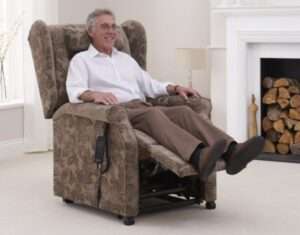
The Copgrove rise and recline chair can be made-to-measure, which is ideal for people with lordosis because the severity of their curvature can vary so much.
In terms of care chairs, then the Lento would be most suitable. With its adjustable seat depth, width, and height, you can make sure your client’s pelvis is perfectly positioned when teamed with a waterfall backrest and tilt-in-space.
The back cushions of the Lento are also attached with Velcro which is particularly good because it allows you to reposition the cushions to suit the client’s needs exactly.
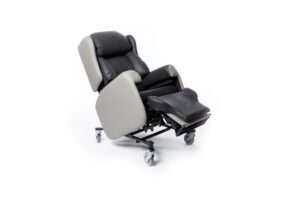
The Lento care chair has tilt-in-space functions and a Velcro backrest that allows you to attach cushions wherever your client needs support.
Summary
The key things to bear in mind with specialist seating for people with lordosis is that they need to have a stable pelvis and a lot of support around their lumbar area. If you need more information on specialist seating for medical conditions, take a look at our free seating eBook.





